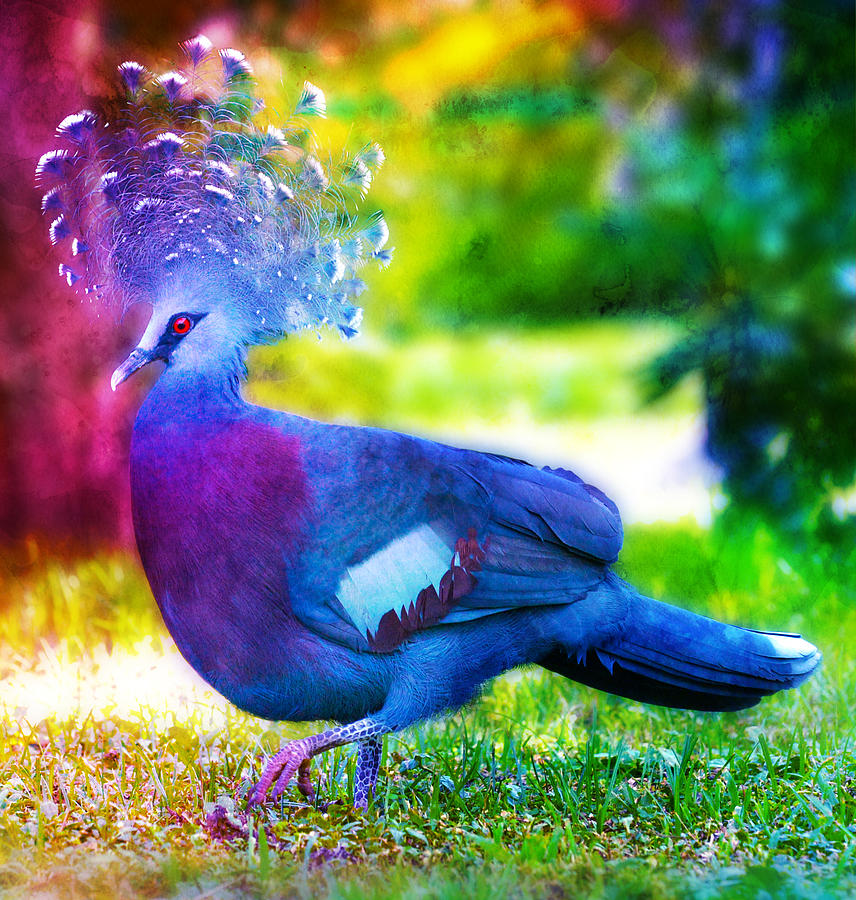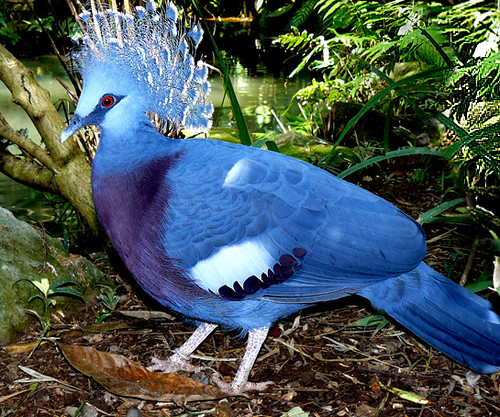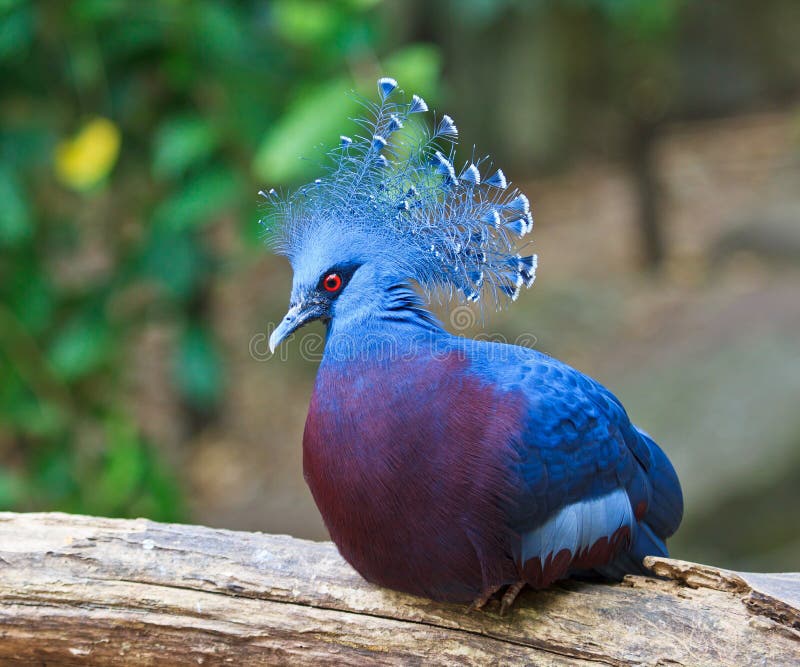
They are also considered highly intelligent animals that travel and migrate by sensing the Earth's electromagnetic field and the sun. These birds are warriors in the way that they can fly at high altitudes (6,000 feet), high speeds (highest recorded speed was 92.5 miles per hour), and long distances (up to 700 miles per day). These two factors have a lot to do with the fact that they are listed as Least Concern for endangerment. The Feral varieties that only reside where humans do have only humans to worry about. They are almost exclusively hunted by the Peregrine Falcon and the Sparrowhawk. In nature, the Pigeon only has two threats.

/victoria-crowned-173672053-resized-58a6f10b3df78c345b62e191.jpg)
Its iris is orange or red with a paler inner ring of brown or brown-gray. The rest of its body is gray again and it can be distinctively picked out by its black “wing bars”, two lines that run across its wings horizontally. The Pigeon's head is dark gray and its neck a glossy iridescent green and purplered. They can be as large as 37 cm long and when they fly, a wingspan of 72 cm.


These birds are monogamous and tend to mate for life. Crowned pigeons differ from other pigeons in having sixteen instead of twelve tail feathers, in the scaling of their legs, in lacking an oil gland and gall bladder, and in possessing the large, fan-shaped crest of erect lacy feathers. Males and females look almost identical, with males sometimes a little larger than the females. They weigh around 3.4 kg and have a length of 75 - 85 cm. It can grow to be the size of a large chicken. This is one of the largest pigeons in the world. The tail is long and has a band of light bluish grey at the tip. Legs are long and speckled brown and white ending in orange feet. The red coloured eyes are surrounded by a dark narrow eye patch. The head is small in proportion to the body, a characteristic of pigeons. There is a lacy sagittal crest on top of the head with tips ending in white. The body is covered in beautiful grayish-blue feathers and the chest in purple feathers, leading to steel-grey belly feathers. This is a very distinctive looking pigeon, easily distinguished from other pigeons by their dark blue-grey plumage and large fan-like crest feathers tipped with white and purple.


 0 kommentar(er)
0 kommentar(er)
